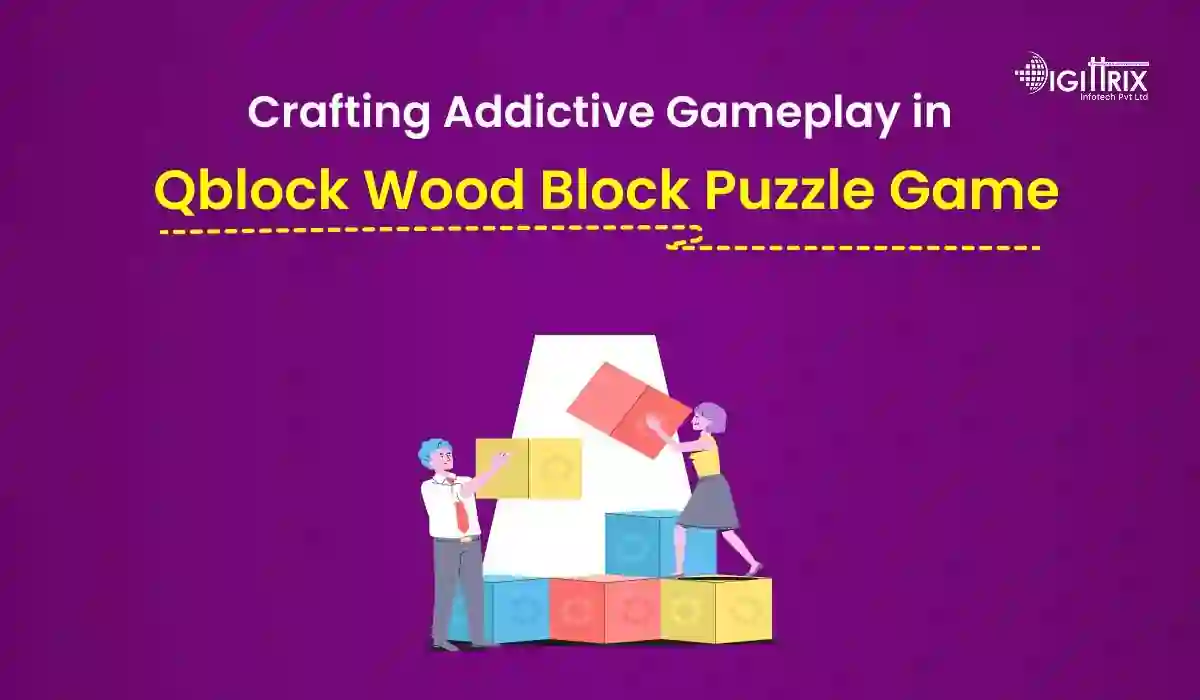QBlock Wood Block Puzzle Game is a global favorite with millions of downloads, stellar ratings, and thousands of active users enjoying addictive puzzle challenges daily.
Highlights
An enthusiastic developer and skilled business management expert with over a decade of experience in the field

Qblock is one of the most well-known names among wood block puzzle games. It's simple rules and addictive gameplay have made it a favorite among fans of logic-based challenges. If you're looking into puzzle game development, especially a wood-themed block puzzle like Qblock, this guide provides a clear, detailed roadmap to help you build your version.
Interested in game development? Learn how to create a fun and engaging merge sticker game with our comprehensive guide.
Qblock is a type of classic puzzle game that combines the mechanics of Tetris, sudoku, and jigsaw puzzles. In this mobile game, players drag and drop wood blocks onto a 9x9 grid, attempting to form full lines or squares, which then disappear, clearing space for more blocks. The game ends when there’s no more room to place new pieces.
Different from action-packed games, Qblock gives players time to think. It focuses more on strategy, planning, and pattern recognition than speed. It's similar to jigsaw puzzles and Sudoku games, but with a unique sliding cube format. According to Android Rank, QBlock surpassed 100 million global downloads, proving its popularity in the casual puzzle gaming area.
The game has gained attention across global platforms, from casual gamers to brain game lovers. It’s often mentioned alongside apps like Woodagram, Sudocube, Braindoku, and other IQ-based games. Some even compare it to classics like snake, crossword, or tangram puzzles. As per the Android Rank report, over 1 million users submitted reviews, reflecting strong engagement and long-term interest in the game.
If you're a mobile game development enthusiast or working with a game app development company, here's what you should consider:
To create a Qblock-inspired puzzle game, follow these core steps:
Start by defining the type of gameplay, features, and target audience. Is it a classic offline puzzle, or a more dynamic, online version with leaderboards?
Decide whether the game is for Android, iOS, or both. Android game development often requires Java or Kotlin, while iOS uses Swift.
Unity, Godot, and Buildbox are great choices for puzzle game development. These engines allow building 2D and 3D games with drag-and-drop options and scripting.
Several known brands are part of the puzzle and mobile game space:
These brands often combine puzzle elements with themes like wood, jewels, or colors to attract various age groups. Based on Android Rank, the game holds a constant average user rating of 4.54 out of 5 on Android.
Qblock wood block puzzle game development is both a creative and technical challenge. If you’re working with a mobile app development or game app development company, focus on simplicity, smooth performance, and fun gameplay. With growing interest in logic games, classic sudoku hybrids, and custom puzzle apps, there is plenty of opportunity in this niche.
By including familiar puzzle elements like triangles, cubes, jigsaw, sliding pieces, or number blocks, and by using gentle colors, rotating effects, or glow features, your puzzle game can reach more players. Be sure to make it easy to download, enjoyable to play, and fun to return to.
With the help of experienced game app developers, you can build a solid puzzle game for Android or iOS platforms. Whether it's offline or online, your Qblock-inspired puzzle game can be the next big thing in mobile gaming.
Interested in game development? Learn how to create a captivating color sorting game with our comprehensive guide.
The popularity of Qblock Wood Block Puzzle Game apps continues to rise in 2025, as users are drawn to their calming visuals, strategic gameplay, and the satisfaction of fitting blocks into place. These games offer a unique mix of logic, creativity, and relaxation, making them ideal for players of all ages and interests.
If you're planning to build a Qblock-style puzzle game, partnering with an experienced mobile game development company is essential. At Digittrix, we specialize in Wood Block Puzzle Game Development, offering complete solutions from concept to final deployment. Our expert game app developers focus on high performance, intuitive design, and monetization-ready features tailored for the casual gaming market.
Whether you're inspired by popular block puzzles or have a creative twist you want to bring to life, Digittrix is here to help. We combine industry experience with innovation to deliver high-quality, addictive puzzle games that players love.
Want to get started with Qblock Game Development or need an estimate for your custom puzzle game app? Contact Digittrix at +91 8727000867 or email us at digittrix@gmail.com for a detailed consultation.

Do you need help in Mobile App development?




Join over 1500+ businesses we've already helped!
Qblock Wood Block Puzzle Game Development involves designing and building puzzle games using wood block styles, similar to classic block games like Tetris.
Technologies include Unity, Cocos2d, and Java/Kotlin for Android game development, often supported by game app development companies.
Yes, a professional game app development company can create custom puzzle games including Qblock-style or other brain teaser formats.
Key features include drag-and-drop blocks, score tracking, game levels, custom themes, sound effects, and smooth UI for mobile gameplay.

©2025Digittrix Infotech Private Limited , All rights reserved.